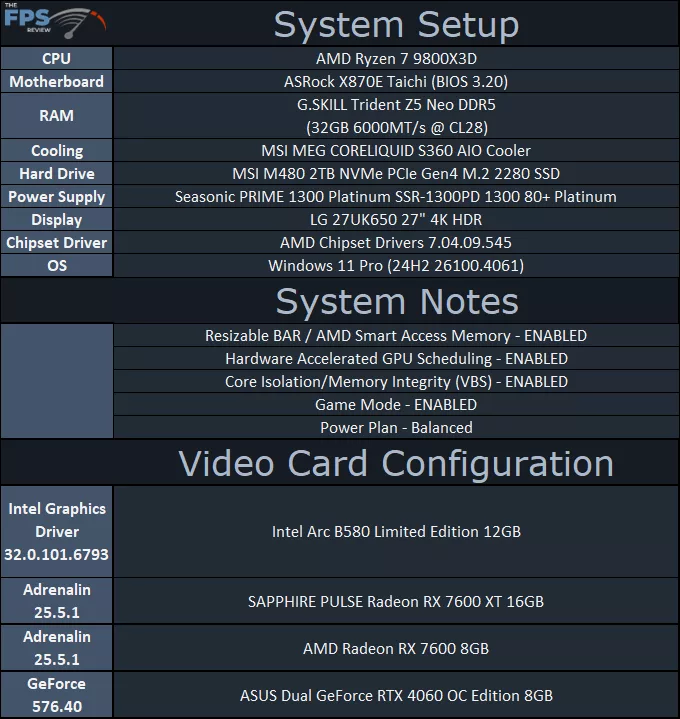Test Setup

For the Intel Arc B580 Limited Edition video card, we are using driver version 32.0.101.6793 dated 5/9/2025; this was the latest driver at the time of review. There is a slightly new driver at the time of publishing, 6795, but it includes support for a few games we aren’t using in this review, so it isn’t relevant for this review’s suite of game testing, and will have no effect on the performance of the games we are using. The 6793 driver does include support for Doom: The Dark Ages, which we are using, so that game is supported with the tested driver, and the driver a few versions back, 6737, included support for Clair Obscur: Expedition 33, which is also being used in this review. Therefore, all games we are using are supported by this latest 6793 driver we are using today, and it did come out this month.
We are using an AMD Ryzen 7 9800X3D CPU for benchmarking, to provide a ‘best case scenario’ for all GPUs, to truly test their maximum potential. We are aware of the Intel CPU driver overhead situation on Intel Arc with slower CPUs, but we are not testing that scenario today; we are focused on showing the maximum potential of each GPU so we can align their performances and compare with that goal in mind when equipped in a best-configuration system.
Also note that the ASUS Dual GeForce RTX 4060 OC Edition is a factory overclocked video card, which runs above the reference GPU Boost for an RTX 4060. The ASUS Dual GeForce RTX 4060 OC Edition has a GPU Boost set at 2505MHz compared to the NVIDIA default of 2460MHz. The SAPPHIRE PULSE Radeon RX 7600 XT is also a factory overclocked video card, it has a game clock of 2539MHz and a boost clock of up to 2810MHz. This places its factory overclock at 3% over the reference spec game clock and 2% over the reference spec boost clock.
